#galaxy explosion
Explore tagged Tumblr posts
Text

Eclipse
#dnd#dungeons and dragons#artists on tumblr#art#ocs#marsilio#something something if even the sun and moon can meet so can we#galaxy explosion#yea i drew this during the eclipse week
10K notes
·
View notes
Text

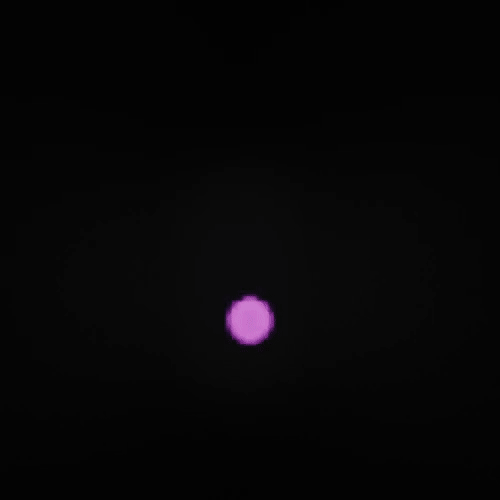


I'm taking a break from character modeling to play around with smokey, explode-y simulations. Here are a couple contenders with various perimeters tweaked. I appreciate the absurd violence of the first one.
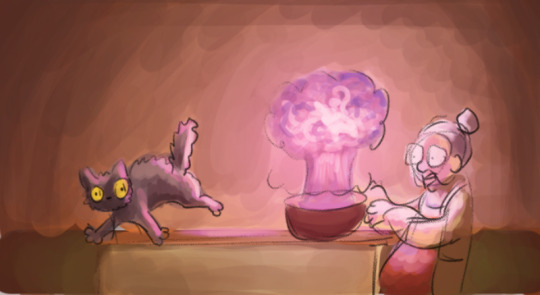
#Smoke Simulation#Galaxy Explosion#Digital Experimentation#Blender Art#Smoke Effects#Visual Effects#Blender Simulation#Galactic Experiment#DigitalSimulation#Art Experiment#Blender Community#Visual Dynamics#Creative Process#Smoke and Particles#Artistic Innovation#Galaxy Art#Tumblr Art#Visual Arts#Digital Effects#digital art#artist on tumblr#art#jar full of cosmos#smoke sim#particle smoke
4 notes
·
View notes
Text

bunch of adult swim stuff i drew for a sticker sheet recently 📺✨
#adult swim#athf#aqua teen hunger force#mooninites#brak#the brak show#venture bros#the monarch#metalocalypse#nathan explosion#moral orel#orel puppington#superjail#superjail warden#[breathes] ok i think thats everyone#also yea i reused that aqua teen art i do what i want. wygd abt it#my art#side note shoutout 2 my oomfie for the robot unicorn attack bg idea bc it was galaxy braining fr
2K notes
·
View notes
Text

#this one is very easy to get strange angles with. because it's just got so many weird shapes on it#porygon#bald#even the original front-facing angle was strange and you could barely tell it's front-facing#hell‚ this angle you can at least tell what it's supposed to be#if you remember the realpokemon post. you remember#this thing also got like banned from the anime or some shit because of an episode that featured it giving kids seizures#fucking did i almost just type “seasures”?? hello?? where am i#even though it was pikachu who initiated the explosion that caused the seizures. and iirc it wasn't even that many seizures#it was like the galaxy note7. where only like 20 or so phones actually exploded but it still got banned from planes#or maybe i'm remembering Every tidbit of information here incorrectly!#y'see folks. this is why i am not a reliable source of information#because i will not be fact checking any of this and instead i'll end off the post with “but idk lol”#edit: it was a lot of seizures. and yes this justifies taking the episode off the air but i don’t feel like the pokémon itself#deserves to be banned from the anime is my point. plenty of folks still like this pokémon#hmm. i wonder if i maybe shouldn’t be spreading middle school rumors on the middle school rumors website
217 notes
·
View notes
Text
Halfa Jason Design
Specifically in thoughts to This but honestly might use it for other things too

#halfa jason todd#dcxdp#dpxdc#ghost jason todd#jason todd#star core jason#Look Robin was a light in the dark of Gotham while Red Hood was a dark bloodied shadow at first#Combine them and you get a star- a light in surrounded by darkness#Plus he died in an explosion so the fire would be fun to add on#Give him vents on his helmet so he can let out galaxy smoke#red hood#batman au#Give him lil mini stars starting with only a few but growing as he recovers & reconnects with friends & families#Let him struggle not to quite literally explode in anger and have to learn to not let the fire consume him
1K notes
·
View notes
Text

Speedpainting 06122024
Welcome to my 2024 Speedpainting Advent Calendar.
Door 6 :).
Created with Krita. Copyright © 2024 Sylvia Ritter.
www.sylvia-ritter.com, Mastodon, Bluesky, Facebook, Instagram.
#art#artoftheday#scifi#robots#galaxy#universe#glow#dark#krita#speedpainting#sylviaritterart#space#planet#explosion#illustrators on tumblr#artists on tumblr
87 notes
·
View notes
Photo

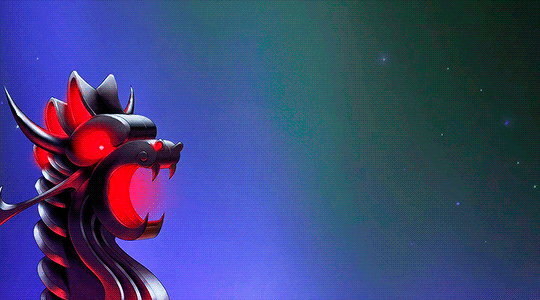
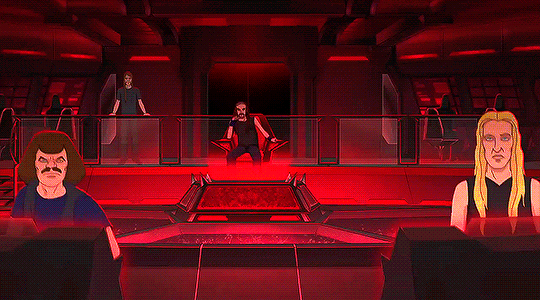

PICKLES THE (DRUMMER) PILOT hatredcopter | rehabklok | the galaxy | army of the doomstar
#pickles the drummer#nathan explosion#metalocalypse#army of the doomstar#metalocalypse army of the doomstar#dethklok#metalocalypse aotd#aotd spoilers#flashing gif#edits#.gif#look i know technically he's not piloting in the galaxy but bear with me#also not me having a thing for a redheaded snarky pilot AGAIN
592 notes
·
View notes
Text








Photos from artist Cai Guo-Qiang's "We Are" Daytime Fireworks Show
#my photos#photography#Cai Guo-Qiang#Cai Guo Qiang#los angeles#Didn't see anything about this on tumblr yet and thought tumblr might enjoy this#It was Awesome in the literal sense of the word like everyone was in awe#the colorful cloud like ones are from Act IV: Birds of Paradise and the galaxy-like one is from Act V: Divine Wrath#Which was so loud everyone was shaken to their core...physically#And then debris from the explosion rained down like black snow upon us
54 notes
·
View notes
Text

💥 Great explosion murder god dynamight 💥
#bnha#mha#my hero academia#boku no hero academia#bakugo#katsuki bakugo#dynamight#great explosion murder god dynamight#bakugo kin#dynachan#dyna edits#dyna galaxy edits
64 notes
·
View notes
Text
MIT scientists pin down the origins of a fast radio burst
New Post has been published on https://thedigitalinsider.com/mit-scientists-pin-down-the-origins-of-a-fast-radio-burst/
MIT scientists pin down the origins of a fast radio burst


Fast radio bursts are brief and brilliant explosions of radio waves emitted by extremely compact objects such as neutron stars and possibly black holes. These fleeting fireworks last for just a thousandth of a second and can carry an enormous amount of energy — enough to briefly outshine entire galaxies.
Since the first fast radio burst (FRB) was discovered in 2007, astronomers have detected thousands of FRBs, whose locations range from within our own galaxy to as far as 8 billion light-years away. Exactly how these cosmic radio flares are launched is a highly contested unknown.
Now, astronomers at MIT have pinned down the origins of at least one fast radio burst using a novel technique that could do the same for other FRBs. In their new study, appearing today in the journal Nature, the team focused on FRB 20221022A — a previously discovered fast radio burst that was detected from a galaxy about 200 million light-years away.
The team zeroed in further to determine the precise location of the radio signal by analyzing its “scintillation,” similar to how stars twinkle in the night sky. The scientists studied changes in the FRB’s brightness and determined that the burst must have originated from the immediate vicinity of its source, rather than much further out, as some models have predicted.
The team estimates that FRB 20221022A exploded from a region that is extremely close to a rotating neutron star, 10,000 kilometers away at most. That’s less than the distance between New York and Singapore. At such close range, the burst likely emerged from the neutron star’s magnetosphere — a highly magnetic region immediately surrounding the ultracompact star.
The team’s findings provide the first conclusive evidence that a fast radio burst can originate from the magnetosphere, the highly magnetic environment immediately surrounding an extremely compact object.
“In these environments of neutron stars, the magnetic fields are really at the limits of what the universe can produce,” says lead author Kenzie Nimmo, a postdoc in MIT’s Kavli Institute for Astrophysics and Space Research. “There’s been a lot of debate about whether this bright radio emission could even escape from that extreme plasma.”
“Around these highly magnetic neutron stars, also known as magnetars, atoms can’t exist — they would just get torn apart by the magnetic fields,” says Kiyoshi Masui, associate professor of physics at MIT. “The exciting thing here is, we find that the energy stored in those magnetic fields, close to the source, is twisting and reconfiguring such that it can be released as radio waves that we can see halfway across the universe.”
The study’s MIT co-authors include Adam Lanman, Shion Andrew, Daniele Michilli, and Kaitlyn Shin, along with collaborators from multiple institutions.
Burst size
Detections of fast radio bursts have ramped up in recent years, due to the Canadian Hydrogen Intensity Mapping Experiment (CHIME). The radio telescope array comprises four large, stationary receivers, each shaped like a half-pipe, that are tuned to detect radio emissions within a range that is highly sensitive to fast radio bursts.
Since 2020, CHIME has detected thousands of FRBs from all over the universe. While scientists generally agree that the bursts arise from extremely compact objects, the exact physics driving the FRBs is unclear. Some models predict that fast radio bursts should come from the turbulent magnetosphere immediately surrounding a compact object, while others predict that the bursts should originate much further out, as part of a shockwave that propagates away from the central object.
To distinguish between the two scenarios, and determine where fast radio bursts arise, the team considered scintillation — the effect that occurs when light from a small bright source such as a star, filters through some medium, such as a galaxy’s gas. As the starlight filters through the gas, it bends in ways that make it appear, to a distant observer, as if the star is twinkling. The smaller or the farther away an object is, the more it twinkles. The light from larger or closer objects, such as planets in our own solar system, experience less bending, and therefore do not appear to twinkle.
The team reasoned that if they could estimate the degree to which an FRB scintillates, they might determine the relative size of the region from where the FRB originated. The smaller the region, the closer in the burst would be to its source, and the more likely it is to have come from a magnetically turbulent environment. The larger the region, the farther the burst would be, giving support to the idea that FRBs stem from far-out shockwaves.
Twinkle pattern
To test their idea, the researchers looked to FRB 20221022A, a fast radio burst that was detected by CHIME in 2022. The signal lasts about two milliseconds, and is a relatively run-of-the-mill FRB, in terms of its brightness. However, the team’s collaborators at McGill University found that FRB 20221022A exhibited one standout property: The light from the burst was highly polarized, with the angle of polarization tracing a smooth S-shaped curve. This pattern is interpreted as evidence that the FRB emission site is rotating — a characteristic previously observed in pulsars, which are highly magnetized, rotating neutron stars.
To see a similar polarization in fast radio bursts was a first, suggesting that the signal may have arisen from the close-in vicinity of a neutron star. The McGill team’s results are reported in a companion paper today in Nature.
The MIT team realized that if FRB 20221022A originated from close to a neutron star, they should be able to prove this, using scintillation.
In their new study, Nimmo and her colleagues analyzed data from CHIME and observed steep variations in brightness that signaled scintillation — in other words, the FRB was twinkling. They confirmed that there is gas somewhere between the telescope and FRB that is bending and filtering the radio waves. The team then determined where this gas could be located, confirming that gas within the FRB’s host galaxy was responsible for some of the scintillation observed. This gas acted as a natural lens, allowing the researchers to zoom in on the FRB site and determine that the burst originated from an extremely small region, estimated to be about 10,000 kilometers wide.
“This means that the FRB is probably within hundreds of thousands of kilometers from the source,” Nimmo says. “That’s very close. For comparison, we would expect the signal would be more than tens of millions of kilometers away if it originated from a shockwave, and we would see no scintillation at all.”
“Zooming in to a 10,000-kilometer region, from a distance of 200 million light years, is like being able to measure the width of a DNA helix, which is about 2 nanometers wide, on the surface of the moon,” Masui says. “There’s an amazing range of scales involved.”
The team’s results, combined with the findings from the McGill team, rule out the possibility that FRB 20221022A emerged from the outskirts of a compact object. Instead, the studies prove for the first time that fast radio bursts can originate from very close to a neutron star, in highly chaotic magnetic environments.
“These bursts are always happening, and CHIME detects several a day,” Masui says. “There may be a lot of diversity in how and where they occur, and this scintillation technique will be really useful in helping to disentangle the various physics that drive these bursts.”
This research was supported by various institutions including the Canada Foundation for Innovation, the Dunlap Institute for Astronomy and Astrophysics at the University of Toronto, the Canadian Institute for Advanced Research, the Trottier Space Institute at McGill University, and the University of British Columbia.
#000#2022#amazing#Astronomy#Astronomy and astrophysics#Astrophysics#atoms#author#billion#Black holes#Canada#comparison#data#diversity#DNA#driving#Emissions#energy#Environment#explosions#fast radio bursts#Filters#Foundation#galaxies#Galaxy#gas#Giving#how#hydrogen#Innovation
49 notes
·
View notes
Text
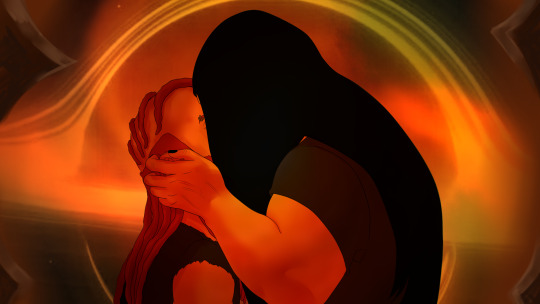

Nathan un-fixed his hair to cover the both of them. Pickles is melting.
Second request is done for @sexystevebuscemi! 💙💙💙 Hope you like it :3
This is also the first post since I've reached 100 followers here wooo! This needs a celebration💙💙 ty, everyone!
#mtl#metalocalypse#pickles the drummer#nathan explosion#mtl fanart#dethklok#dethklok fanart#metalocalypse fanart#nickels#they do one epic kiss#after aotd#post aotd#aotd#when 2 galaxies meet. they merge and become even more massive together#mtl artwork
140 notes
·
View notes
Text

Cosmic Explosion Illuminating Astral Horizons
#impressionism#cosmic#universe#space#art#galaxy#stars#celestial#energy#light#creation#explosion#nebula#spiritual#consciousness#astral#spiritualawakening#cosmicart#magic
17 notes
·
View notes
Text

The stellar explosion in the T Coronae Borealis system is a rare phenomenon that happens every 80 years.
118 notes
·
View notes
Text

Glitch in Time by Michael Creese
#astronaut#astronauta#astronaute#space#spaceman#sci-fi#scifi#dystopia#dystopian#pop culture#space art#stars#galaxy#supernova#nebula#explosion#art#glitch#time#dark art#gothic#goth#michael creese#oil painting#cool#color#black#night#shiny#sparkle
85 notes
·
View notes
Text
Made some necklaces for these silly critters!!!



Also, does anyone have name suggestions for these fellows :3

#furby#furby fandom#furblr#all furby#safe furby#furby 2023#furby furblet#furblet#101: sherbert mermaid surprise#101: galaxy sparkle explosion#101: rainbow eldritch blast#they have have silly elaborate names :3#also i need to update my intro post cause i have so many new guys....#also sorry that i havent posted in a while.. i just havent had the energy:'3
13 notes
·
View notes
